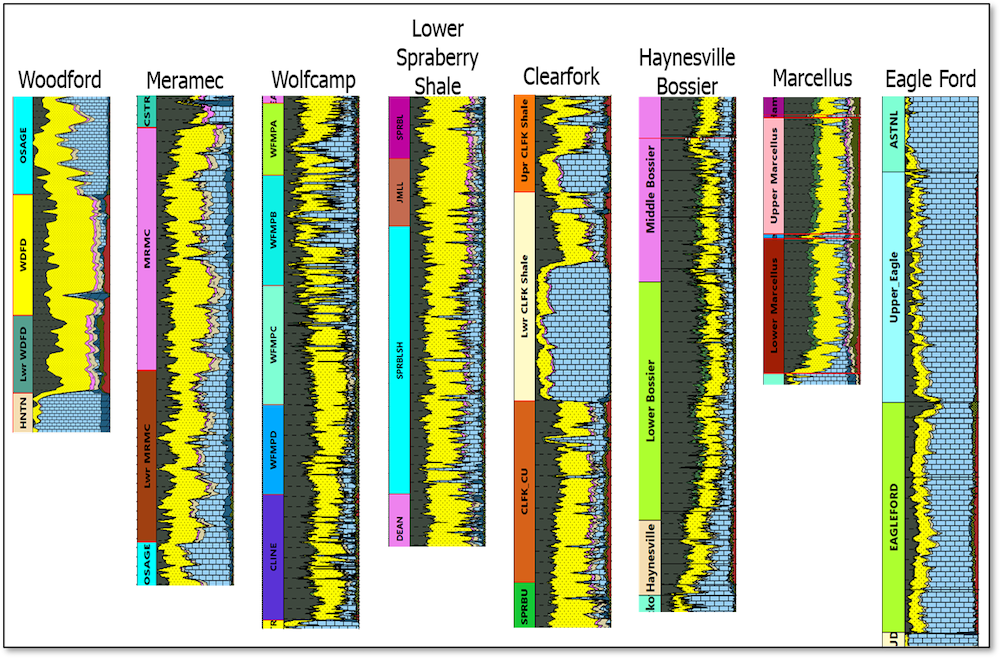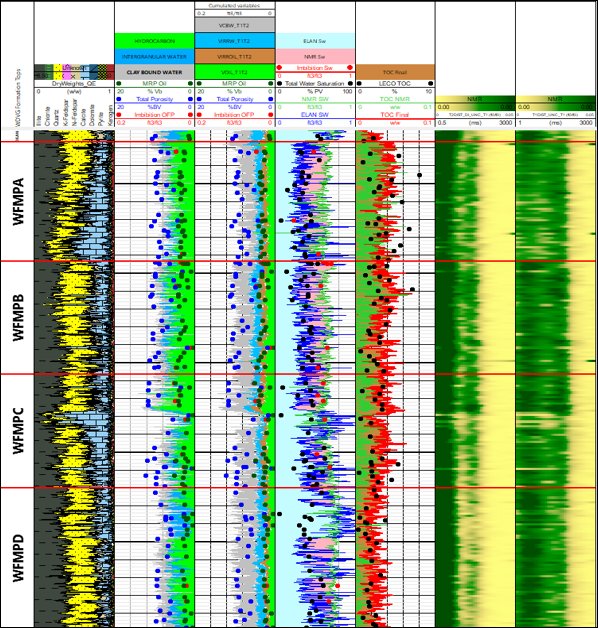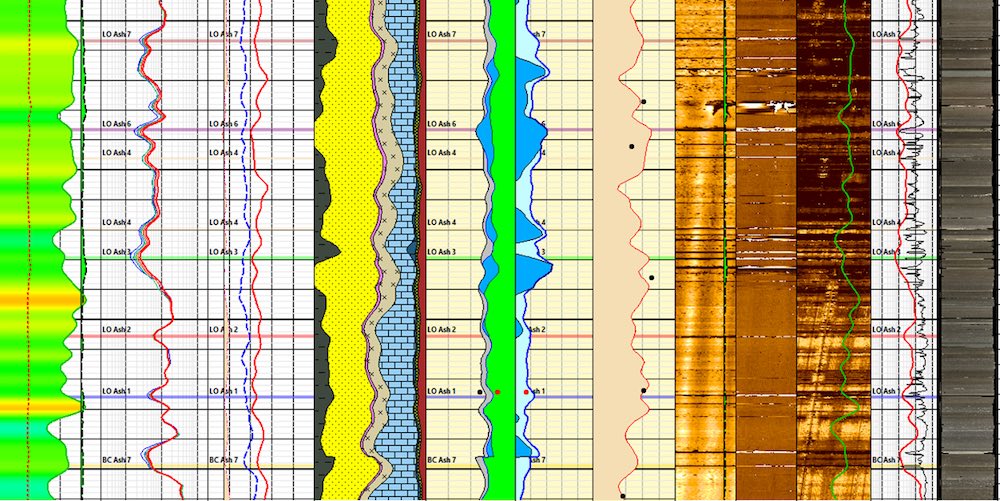
WDVGE uses the Techlog platform for processing and analyzing wireline logs and core data. With the most extensive database of top-tier log data including NMR, dielectric, dipole sonic, elemental spectroscopy and triple combo data, WDVGE has constructed highly calibrated petrophysical models via multimineral inversion as opposed to the more linear sequential petrophysical models of the past.


Nuclear Magnetic Resonance (NMR) wireline tools are sensitive to the hydrogen protons in the formation which react when a magnetic moment is induced in the formation by the tool. Due to this interaction with hydrogen, the NMR tool is uniquely suited to describing the fluid system in the rock and is not affected by the rock matrix. The NMR log provides a method for quantifying porosity, resistivity-independent water saturation, wettability, pore size distribution and mobility. WDVGE employs the NMR tool for improving estimates of in-situ saturations, identifying horizontal wellbore landing positions and modeling permeability.
Borehole image logs generally come in two varieties: resistivity and ultrasonic. WDVGE processes and analyzes both types of borehole image from both water-based and oil-based systems. The image log is crucial for properly understanding the rock fabric and are used to detect induced and natural fractures, ash beds, fibrous veins, rock interfaces and bedding planes. Due to the highly layered nature of organic mudstones in North America and across the world, the image log is a key piece of the subsurface characterization process.
